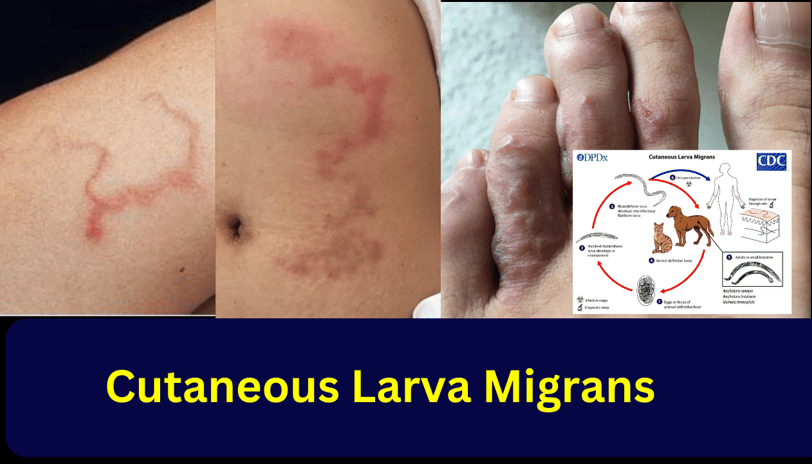The worm in the skin : Cutaneous Larva Migrans
Discover the intriguing world of Cutaneous Larva Migrans in our latest article! Unravel the mystery behind the sensation of "worms under the skin," as we delve into the causes, symptoms, and treatment of this unique condition. Learn how these parasitic larvae find their way into human skin, causing discomfort and itching, and explore effective prevention measures to keep yourself protected. If you've ever been curious about this "creeping eruption," join us to uncover the facts and insights about Cutaneous Larva Migrans. Your skin's well-being is just a click away!
8/21/20232 मिनट पढ़ें
watch video on cutaneous larva migrans


"Worm Under the Skin: Unraveling the Mystery of Cutaneous Larva Migrans"
Have you ever heard of a condition where tiny worms seem to be moving under the skin? It might sound like something out of a horror movie, but in reality, it's a fascinating yet uncomfortable phenomenon known as Cutaneous Larva Migrans (CLM). In this article, we'll dive deep into the world of CLM, exploring its causes, symptoms, treatment, and prevention methods. So, if you're curious about these elusive "skin-crawling" worms, keep reading to learn more!
Understanding Cutaneous Larva Migrans:
Cutaneous Larva Migrans, often referred to as "creeping eruption," is a skin condition caused by the larvae of certain parasitic worms. These worms belong to the hookworm family, and while they typically infect animals, they can accidentally penetrate human skin, leading to a unique and uncomfortable experience.
Causes and Transmission:
The most common culprits behind CLM are animal-hookworm larvae, particularly those found in cats and dogs. When these larvae come into contact with human skin, they can burrow under the surface, causing an itchy, winding trail that resembles a wandering path – hence the name "migrans." Beaches, sandy areas, and other places where animals defecate are common transmission zones for these larvae.
Symptoms and Presentation:
The initial symptoms of CLM are intense itching and redness at the site of penetration. Over time, the itching worsens, and a distinctive, serpentine rash develops as the larvae continue to move just below the skin's surface. The sensation of something crawling beneath the skin is not uncommon, adding to the discomfort experienced by those affected.
Treatment and Relief:
Fortunately, Cutaneous Larva Migrans is a treatable condition. Topical anti-parasitic creams or lotions containing medications like albendazole or ivermectin are often prescribed to kill the larvae and provide relief from itching. The rash typically starts to improve within a few days after treatment begins.
Prevention Measures:
Preventing CLM largely involves avoiding contact with soil or sand that may be contaminated with animal feces. If you're visiting areas where these parasites are prevalent, wearing shoes and proper clothing can act as a protective barrier. Additionally, practicing good hygiene and washing hands thoroughly after outdoor activities can help reduce the risk of infection.
Watch my Video on Cutaneous Larva Migrans :
Conclusion:
While the thought of having worms under your skin might sound like a nightmare, Cutaneous Larva Migrans is a real and manageable condition. By understanding its causes, symptoms, and prevention strategies, you can protect yourself from this uncomfortable experience. If you ever suspect you might be dealing with CLM, don't hesitate to consult a medical professional for accurate diagnosis and treatment.
Remember, knowledge is power, and in this case, it's the key to keeping those "skin-crawling" worms where they belong – outside of your skin.
